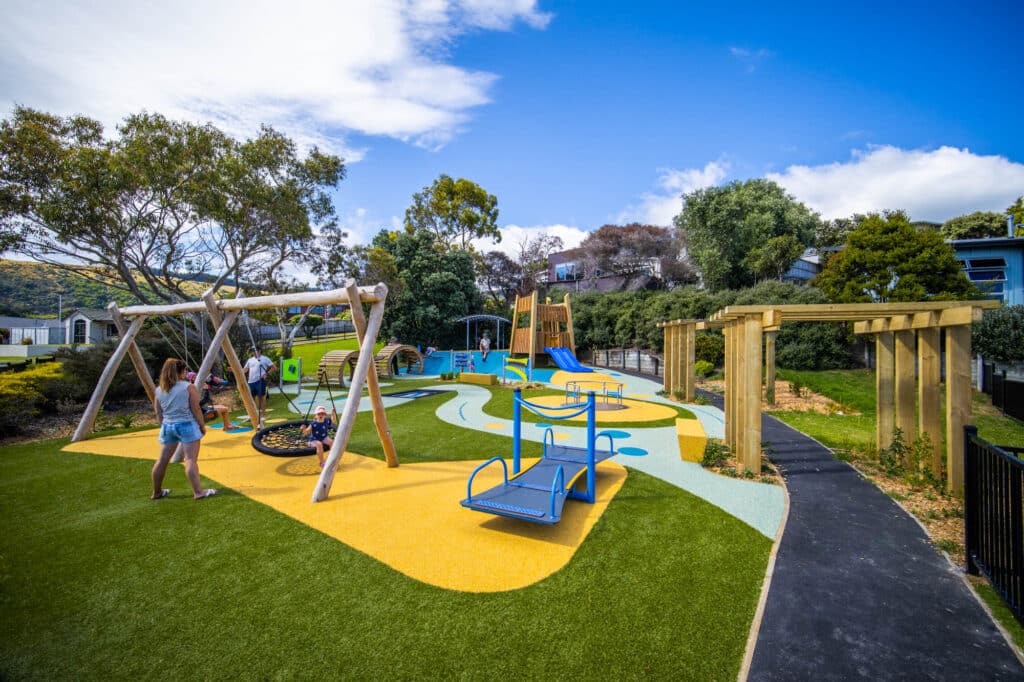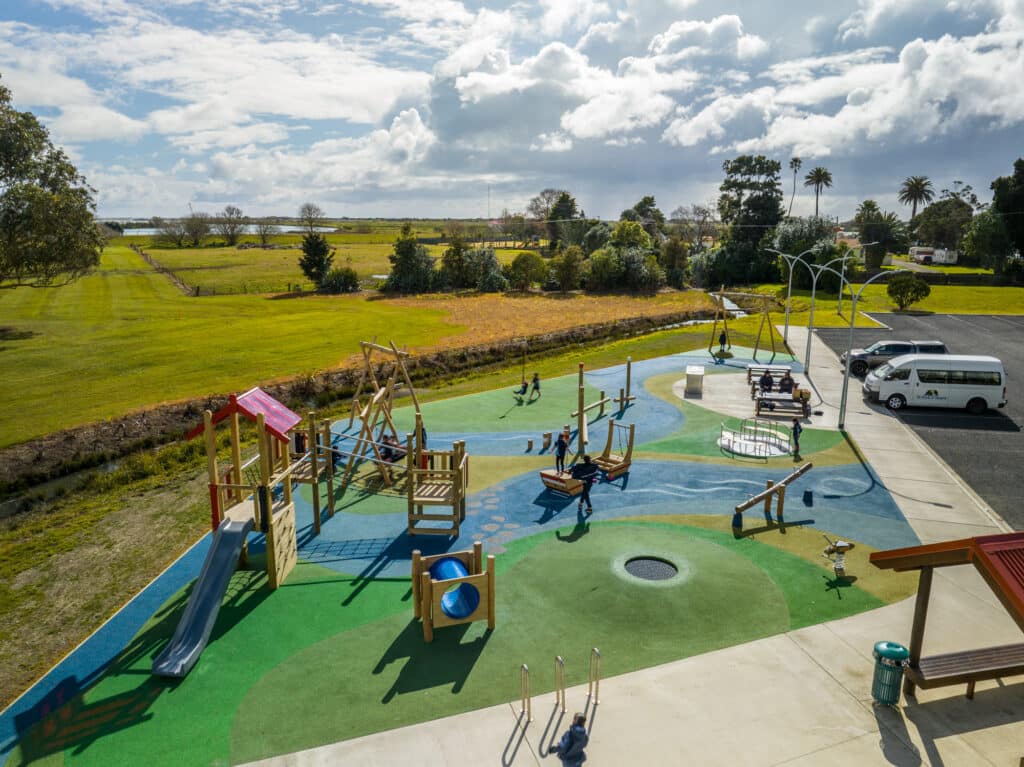Making a playground with a purpose and real intention might seem like an obvious option. However, intentional playground design is a specific term we use at Creo to make your space shine and really connect with your purpose, story, and background. These types of playgrounds have the most play value, beauty, and engagement.
In this article, we will cover the main components of a great intentional playground design. If you prefer, watch the video below.
The Essence of Intentional Playground Design
Intentional design starts with a fundamental question: What is the essence of your playground? This is about more than just picking colours or equipment. It is about understanding the narrative you want to integrate into the space you will build.
Our approach is to guide you through this process, helping you choose a theme (be it sensory, accessible, inclusive, nature-focused, sustainable, or a destination playground) and asking the right questions to crystallise your vision into a tangible, delightful reality.

Key Elements of Intentional Design in Playgrounds
- The Story: Every playground tells a story. What’s yours? This is a crucial question in intentional playground design. For a school playground, it might be about embedding learning opportunities and reflecting the school’s brand. For community spaces, it could be about capturing the cultural essence of the area, turning the playground into a hub for communal storytelling and connection.
- Accessibility: Inclusivity is at the heart of intentional design. It’s about ensuring that children of all abilities can explore, play, and grow together. This involves thoughtful strategies to create playgrounds that are accessible to everyone, breaking down barriers and fostering a sense of belonging.
- Age-Appropriate Equipment: Intentional design also means tailoring the playground to suit its primary users. This involves choosing age-appropriate equipment and balancing the need for safety with the desire for challenging, engaging play experiences.
- Purpose-Driven Construction: Every element in an intentionally designed playground serves a purpose, aligning with the specific needs and desires of the community it serves. This could be reflected in case studies of playgrounds built with a clear, community-driven purpose.

Benefits of Intentional Design
- Enhanced Community Outcomes: Intentional design does more than beautify a space; it transforms it into an important part of the community. These playgrounds become well-used and appreciated extensions of the community, reflecting the collective values and aspirations.
- Reflecting Community Voice: A key benefit of intentional design is its ability to incorporate community feedback into the playground’s design, ensuring that the space truly resonates with its users.
- Maximizing Play Value: Intentionally designed playgrounds offer a richness of play, learning, and social opportunities, maximising the play value and ensuring a diverse range of experiences for all users.
Conclusion
The philosophy of intentional design in playgrounds is about crafting spaces that are more than the sum of their parts. It’s an invitation to consider these principles in your future playground projects to create spaces that truly reflect the heart and soul of your community.
Give us a call at 0800 000 334 or e-mail [email protected], and our team will guide you to design and build the playground you wish.
